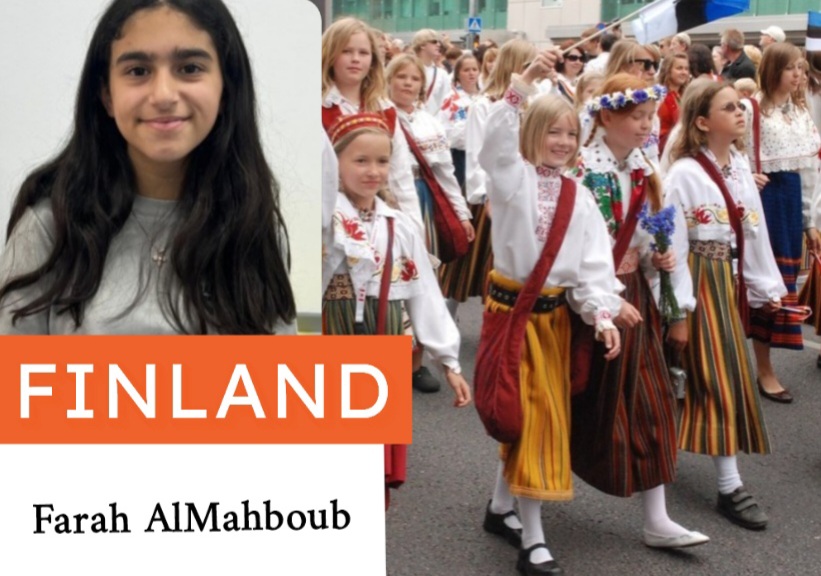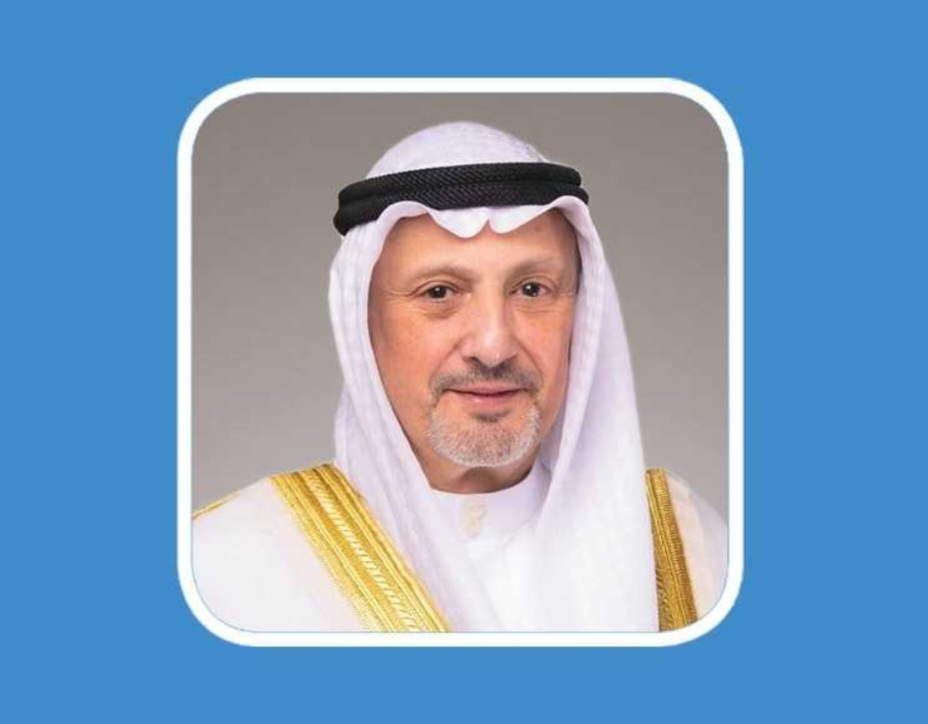الطالبة: فرح خالد المحبوب ..تكتب عن فنلندا

Finland
Written by: Farah AlMahboub
Grade: 5 purple
School: Dasman Bilingual School
Chapter one..
Finland is one of the world’s northernmost
countries of Europe, Finland is located between
Russia on the east Sweden on the west, and the top
of Norway on the north, On the southwest the land
just into the Baltic Sea, which splits into the gulf of
Bothnian on the country’s western side and the Gulf
of Finland along its southern edge. About one third of
the length of the country lies north of the arctic circle.
The climate, soil and landforms make human
settlement difficult in the northern two thirds of the
country. Most of the Finnish people live in the
southern third of the country either along the coast
on the Baltic Sea and the Gulf of Finland or around
the edges of the numerous lakes that dot the glacially
formed land scape. The capital of Finland is Helsinki.
Area of 130,680 square miles (388,462 square Kilometers) population
Chapter two..
Finland is a stable progressive country despite
natural as well as political and economic handicaps.
It has been independent only since 1917. The young
republic was defeated twice by the Soviet Union
during World War 2. The Finnish were forced to give
up valuable land areas, resettle over 400,00 people,
and pay large reparations to the Soviet Union. Since
that time, the Finns have rebuilt their country and
have maintained a natural foreign policy the land
surface of Finland is underlain by ancient granitic
rocks that were severely eroded during the ice age.
Most of the country lies at low elevations with
mountainous terrain restricted to the far north
Chapter 3..
Poorly drained land dominates much of the surface
which is dotted with an estimated 55,000 lakes.
inland water covers 12,979 square miles (33,615
square kilometers) of Finland’s area. The hilly areas
ridge, lakes and quashes were formed by glaciers.
The most fertile soils lie along the coast and around
in land lakes, but they are sparse. Finland has a high
latitude, continental type climate, in the southern part
moderating winds off the north and the Baltic Sea
prevents severe weather conditions. The northern
portions of the country have long severe winter short.
Cool summers that might not make sense.
Chapter 4.
Frost can occur during any month in the north and
even in the south the growing season averages only 3
months or less. Far northern latitude however it has
long hours of summer daylight, which offsets the
short growing season. The annual average
precipitation ranges from 24 inches (bi centimeters)
in the south to 16 inches (41 centimeters) in the far north. Winter snowfall is also considerable.
Plants & Animals
Forests cover much of Finland, and lumbering is a
major industry. Even the Finland is the 6th coldest
country in Europe, pines and spruce are the main
coniferous species and, in the south, they are also
mixed deciduous trees such as birch, hazed, aspen,
maple, alder & last one is linden, trees of the northern
forests are often dwarfed in size because of the poor
growing conditions. The northern tundra, or bogland,
Zones have lichens mess and lastly cloud berries in
addition to the stunted trees
Animals
The animal life of Finland is adopted to a land of
large forest and water areas and a rugged climate.
Waterfalls abound on coastal and inland waters.
Animals such as bears, wolves, and lynx inhabit the
forests. Abundant reindeer serve as domesticated
animals in the northern Lapland area. Among fish
species are trout, and white fish in northern inland
water and perch and pike in the southern lakes and streams.
People and Culture
The Finnish language belongs to the Finno-Ugric
language group, which also includes Hungarian and
Estonian.
Notable minority groups include the Sami in the north
and swedes along the Baltic Sea coast and in the
Ahvenanmaa. The Sami may be descendants of the
original Fino or Mongolian tribes who came to the
region. There are several thousand Sami. And the
Swedish group totals about 6% of the population but
is steadily decreasing in numbers although Finland
does not have an official language, Finnish and
Swedish are both considered national languages.
There is no official or state religion and though the
evangelical Lutheran and Finnish orthodox churches
have special recognition, freedom of the religion is
granted to all religious groups. The majority of the
people are Lutherans, though there are small
minorities of Greek orthodox and persons not
affiliated with a particular religion or other beliefs.
Because Finnish culture has been rather isolated, it
has developed distinct characteristics. The Kalevala
is a national folk epic published in 1835.
The animal life of Finland is adopted to a land of
Animals such as bears, wolves, and lynx inhabit the
forests. Abundant reindeer serve as domesticated
animals in the northern Lapland area. Among fish
species are trout, and white fish in northern inland
water and perch and pike in the southern lakes and
Economy and 3 Facts
Agriculture is decreasing in importance in the Finnish
economy agriculture, fishing & forestry accounted for36%
of the labor force in 1960 but less than 5 % by
the end of the 20th century nevertheless as a matter
of government policy, Finland remains self-sufficient
in food staples, however the country depends heavily
upon foreign trade to obtain items such as machinery
oil coal food chemical vehicles and many others
required for its economy. Germany, Sweden, the UK,
Russia, The U.S & Japan are its leading trading
Partners
Now it’s time for three
Facts..
1- Finland joined the United Nations in 1955 and is a
member if the Nordic council and the European
union.
2- Finland because the first European to have
women as both presidents and prime minister.
3- Finland capital Is Helsinki.




